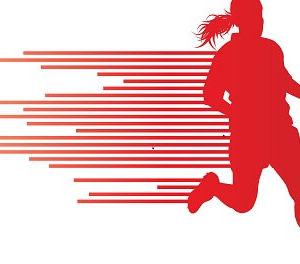Barefoot Running Can Hurt Bones
Barefoot Running Fans Swear It Reduces Injury
In previous running articles taken from Chris McDougall’s book “Born to Run”, and Harvard professor Daniel Lieberman’s study, we defined the human body as more capable of running long distances barefoot. This article began a craze where barefoot running fans swear that to reduce injury risk, they should not land on their heels, but land near the balls of their feet. Thought to mimic that of our barefoot forebears they suggest this represents the most natural way to run.
The latest study, from exercise science professors, found that if runners make a quick transition to minimalist shoes, barefoot running, they may suffer a possible stress fracture and an increased risk of injury to the bones in the foot. The researchers study went over a 10-week period, included 36 seasoned runners. The study required each runner’s feet undergo an MRI to prior the study. 50% of the runners took a slow transition to training into five-finger minimalist shoes while the other 50% trained in traditional running shoes.
Transition Slowly to Barefoot Running– One Year
Following an industry suggested protocol, the first week, they did one (1-2 mile) run, increasing the distance so by week three, they could run 3 miles. Runners were advised to add mileage as they felt comfortable, in the minimalist shoes, with the goal of replacing one short run per week in traditional shoes with the minimal shoes.
Runners in Minimalist Shoes Had Suffered More Stress Injuries
Ending the 10-week period an MRIs was taken. The researchers learned that those who had transitioned to the minimalist shoes had suffered more stress injuries and increases in bone marrow edema (inflammation in the bone causing excessive fluid) than those wearing traditional shoes.
The study pointed out the majority of those who injuries were women. When bone is impacted by repetitive actions, including running, it goes through a normal remodeling process to get strong. Injury occurs when the impact is too quick or powerful, and the bone fails to have the chance to remodel properly before impact reoccurs.
Does Not Mean Minimalist Shoes Are Bad
Minimalist shoes aren’t bad, but care is needed to minimize the risk of injuries. Runners should transition over a longer duration than 10 weeks and at a lower intensity (miles per week).
This study is the first of many looking at minimalist running shoes. Over the next several months they plan to publish enough research to begin to establish clear recommendations for anyone considering making the switch.
With $6.5 billion running shoe market, minimalist shoes now making up 15% of that market, the findings are nothing from which to run. For people who are considering trying “barefoot” running shoes, researchers at BYU have a message for you: Take it slow!
Transitioning to Minimalist Shoes Stressful to The Bones
ACSM recommends certified personal trainers advise clients that transitioning to minimalist shoes is stressful to the bones! Be reminded that people have grown up their whole life wearing shoes and need to give their muscles and bones time to make the change. Make sure to take the transition gradually.


